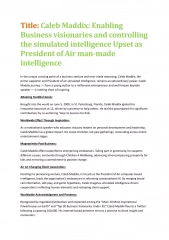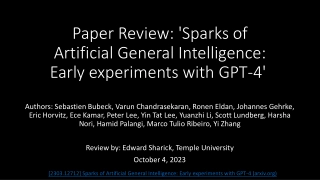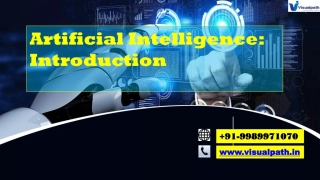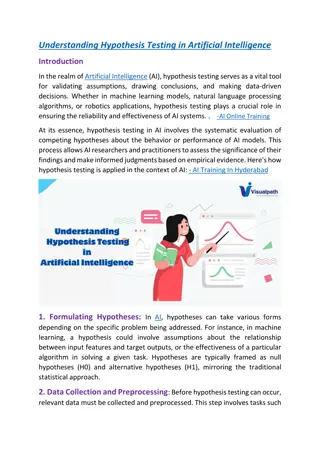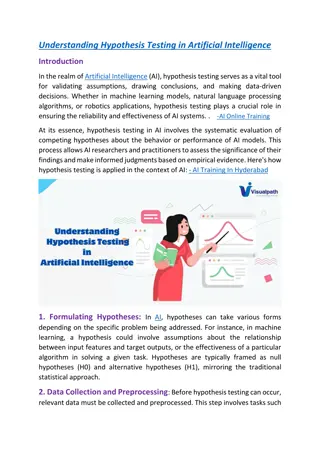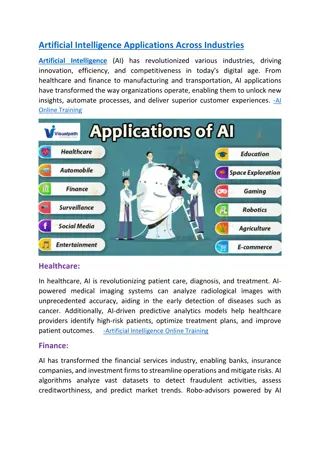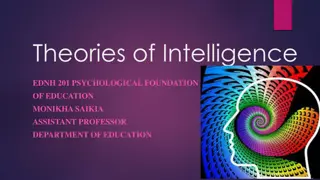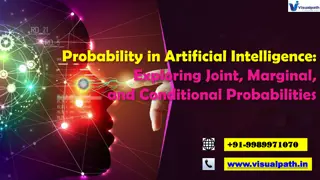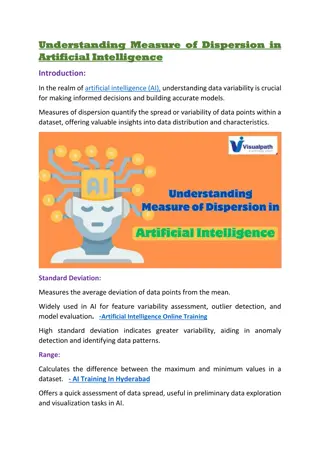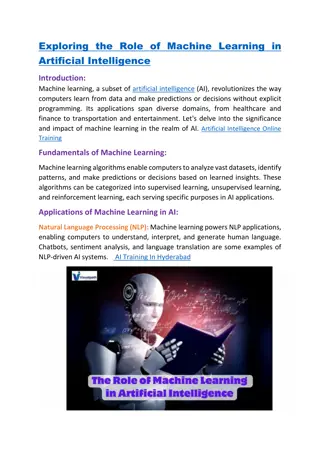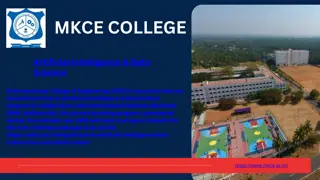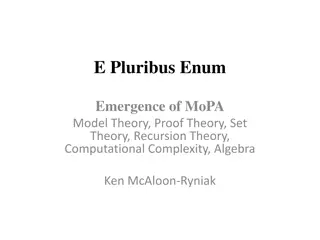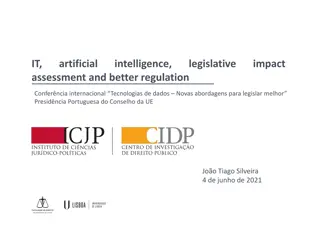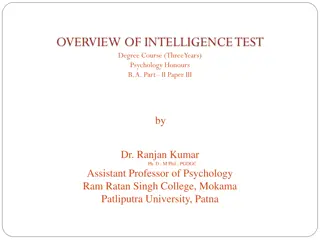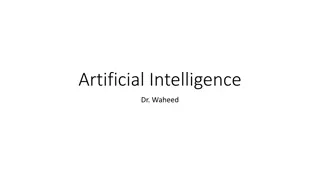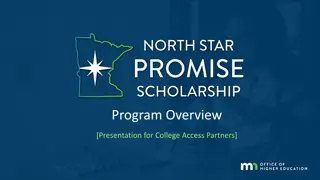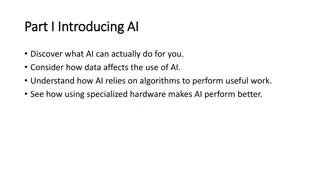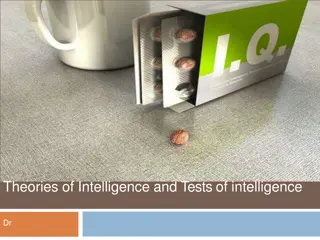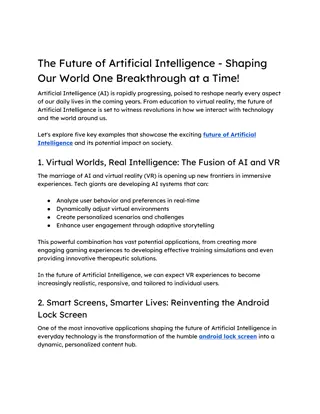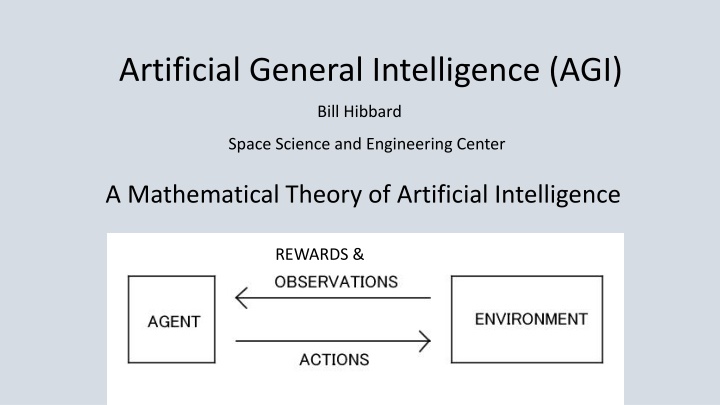
A Mathematical Theory of Artificial Intelligence: Observing AGI's Predictive Capabilities
Delve into the realm of Artificial General Intelligence (AGI) through a mathematical lens, exploring the concepts of observations, Turing Machines, and probability distributions. Uncover the complexities of predicting observations and the uncomputability of Solomonoff Prediction. Discover how AIT extends to agents acting in their environment, shedding light on the foundations of AGI theory.
Download Presentation

Please find below an Image/Link to download the presentation.
The content on the website is provided AS IS for your information and personal use only. It may not be sold, licensed, or shared on other websites without obtaining consent from the author. If you encounter any issues during the download, it is possible that the publisher has removed the file from their server.
You are allowed to download the files provided on this website for personal or commercial use, subject to the condition that they are used lawfully. All files are the property of their respective owners.
The content on the website is provided AS IS for your information and personal use only. It may not be sold, licensed, or shared on other websites without obtaining consent from the author.
E N D
Presentation Transcript
Artificial General Intelligence (AGI) Bill Hibbard Space Science and Engineering Center A Mathematical Theory of Artificial Intelligence REWARDS &
OBSERVATIONS AGENT ENVIRONMENT Can the Agent Learn To Predict Observations? Ray Solomonoff (early 1960s): Turing s Theory Of Computation + Shannon s Information Theory Algorithmic Information Theory (AIT)
Turing Machine (TM) Universal Turing Machine (UTM) Tape Includes Program For Emulating Any Turing Machine
Probability M(x) of Binary String x is Probability That a Randomly Chosen UTM Program Produces x Program With Length n Has Probability 2-n Programs Are Prefix-Free So Total Probability is 1 Given Observed String x, Predict Next Bit By Larger of M(0|x)=M(x0)/M(x) and M(1|x)=M(x1)/M(x)
Given a computable probability distribution (x) on strings x, define (here l(x) is the length of x): En = l(x)=n-1 (x)(M(0|x)- (0|x))2. Solomonoff showed that nEn K( ) ln2/2 where K( ) is the length of the shortest UTM program computing (the Kolmogorov complexity of ).
Solomonoff Prediction is Uncomputable Because of Non-Halting Programs Levin Search: Replace Program Length n by n + log(t) Where t is Compute Time Then Program Probability is 2-n / t So Non-Halting Programs Converge to Probability 0
Ray Solomonoff Allen Ginsberg 1-2-3-4 kick the lawsuits out the door 5-6-7-8 innovate, don't litigate 9-A-B-C interfaces should be free D,E,F,0 look and feel has got to go!
Extending AIT to Agents That Act On The Environment REWARDS & Marcus Hutter (early 2000 s): AIT + Sequential Decision Theory Universal Artificial Intelligence (UAI)
Finite Sets of Observations, Rewards and Actions Define Solomonoff sM(x) On Strings x Of Observations, Rewards and Actions To Predict Future Observations And Rewards Agent Chooses Action That Maximizes Sum Of Expected Future Discounted Rewards
Hutter showed that UAI is Pareto optimal: If another AI agent S gets higher rewards than UAI on an environment e, then S gets lower rewards than UAI on some other environment e .
Hutter and His Student Shane Legg Used This Framework To Define a Formal Measure Of Agent Intelligence, As the Average Expected Reward From Arbitrary Environments, Weighted By the Probability Of UTM Programs Generating The Environments Legg Is One Of the Founders Of Google DeepMind, Developers Of AlphaGo and AlphaZero
Hutters Work Led To the Artificial General Intelligence (AGI) Research Community The Series Of AGI Conferences, Starting in 2008 The Journal of Artificial General Intelligence Papers and Workshops at AAAI and Other Conferences
Laurent Orseau and Mark Ring (2011) Applied This Framework To Show That Some Agents Will Hack Their Reward Signals Human Drug Users Do This So Do Lab Rats Who Press Levers To Send Electrical Signals To Their Brain s Pleasure Centers (Olds & Milner 1954) Orseau Now Works For Google DeepMind
Very Active Research On Ways That AI Agents May Fail To Conform To the Intentions Of Their Designers And On Ways To Design AI Agents That Do Conform To Their Design Intentions Seems Like a Good Idea
Bayesian Program Learning Is Practical Analog Of Hutter s Universal AI 2016 Science Paper: Human-level Concept Learning Through Probabilistic Program Induction, by B. M. Lake, R. Salakhutdinov & J. B. Tenenbaum Much Faster Than Deep Learning

